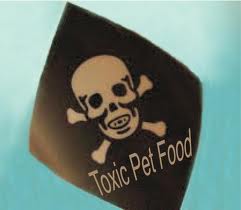
Foods Pets Should Avoid
When it comes to the welfare of your pet, feeding them a proper diet is probably at the top of your list. But just because a food is healthy for you doesn’t mean it’s healthy for your pet. In fact, some human foods can be fatal for dogs and cats. Read on to find out which surprising foods are dangerous for your furry friend.

Raisins and Grapes
Never feed your dog raisins or grapes, says Dr. Tim Hackett, hospital director of the Veterinary Teaching Hospital at Colorado State University. While the specific toxin in the fruit is unknown, consumption can cause severe health problems including kidney failure. “Often times, symptoms won’t develop until days after the grape or raisin is ingested,” Hackett says. If you believe that your pet has ingested raisins or grapes, Hackett recommends that you take your pet to the vet immediately.

Macadamia Nuts
The high fat content in macadamia nuts makes them dangerous, Hackett says. Ingesting macadamia nuts can upset a dog’s stomach and cause vomiting. Other symptoms can include tremors and twitching. Like grapes and raisins, vets don't know exactly what causes the gastrointestinal problems, but Hackett says you should take your pet to the vet if they eat macadamia nuts.

Avocado
Small amounts of avocado may not cause any problems for your pooch, but if consumed in large amounts, the fruit can cause gastrointestinal problems and even pancreatitis. Besides the high fat content, avocados are dangerous because of persin, which while safe for humans, is considered a toxin for some animals, especially birds. Learn more: What Can't Dogs Eat Avocados?

Xylitol

Onions and Garlic
While trace amounts of onion and garlic powder appear in dog food, whole onions and garlic can cause pets to become anemic. (Tylenol has the same effect on pets.) “Cats in particular do not process the sulfur containing compound found in onions and garlic well,” Hackett says. Symptoms might not develop for a few days, but weakness and inability to move could be indications of onion or garlic consumption. If you suspect your pet has consumed onions or garlic, take your pet to the vet.

Chocolate
Chocolate is probably the food that most often comes to mind when people talk about human foods that pets shouldn’t eat, but a little bit of chocolate may not be dangerous, Hackett says. To be safe, however, he recommends keeping your pets away from any and all chocolate.
The danger with chocolate? For dogs, it’s the caffeine. All chocolate has some traces with dark chocolate containing the most. “The worst is when a dog gets a hold of dark baking chocolate, which could potentially lead to a fatality,” Hackett says. Milk chocolate attracts dogs in particular, because it is likely to have eggs, sugar, and cream. These ingredients are high in fat and could cause pancreatitis. Ingestion of chocolate can also cause tremors, vomiting, and an irregular heartbeat. Hackett says that every owner should know what the regular heartbeat of their pet is, so that they can better monitor a potentially dangerous situation.

Salty Foods
A potato chip or two shouldn’t be cause for concern, Hackett says, but if your pet gets a hold of an entire bag of chips, they can get in trouble quickly. The issue is sodium, which can cause a shift in fluids and electrolytes and lead to dehydration, tremors, and even seizures. Your vet can help restore electrolytes and fluids.

Hops
With home brewing on the rise, animals are sometimes consuming unused hops, Hackett says. When eaten, hops can cause seizures, elevated heart rate, and high temperature. If you are a home brewer, dispose of hops out of the reach of your pets. Make sure to not throw hops or remaining particles even in the yard.

Dough
Don’t leave rising dough out and within reach. Hackett says dough will continue to rise in your pet’s gastrointestinal tract causing abdominal pain and even vomiting. Yeast enzymes also present additional health risks as they convert into sugar and produce ethanol. Symptoms may not be immediately apparent. If your pet has eaten raw dough, take them to your vet as soon as possible.

Raw Meat and Eggs
Even if you want to feed your pet a raw diet, you should probably avoid it—for everyone in the house. That’s because raw meat can make you and your pet sick. Coming in contact with raw meat can result in vomiting as well as bacterial infections including salmonella, E.coli, and listeria. Find out more about raw food diets here. Raw eggs can cause a vitamin B deficiency when eaten and can also cause skin problems for pets.

Table Scraps
According to Hackett, this is probably the most dangerous thing that owners could feed to their pets. Animals are not used to the high fat meals and scraps, and they can develop pancreatitis. Bones from table scraps can also be a choking hazard. Hackett says that dogs will work knotty bone joints down to a size they can swallow, and then the bones will get caught in their throat.

